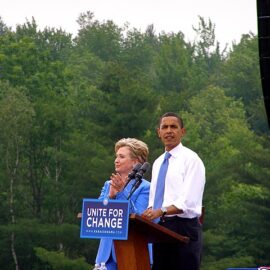

This article is an excerpt from the Shortform book guide to "Imagined Communities" by Benedict Anderson. Shortform has the world's best summaries and analyses of books you should be reading.
Like this article? Sign up for a free trial here .
How did the British colonies find their own sense of nationalism after being colonized? How did Western-style nationalism spread to the East?
The term “colonial nationalism” refers to the fight for independence and autonomy in many nations that were colonized by Europeans. Ironically, it was actually the European colonization process that gave many nations the tools to fight back against the Europeans and develop their own sense of nationalism.
Continue reading to learn how nationalism spread around the world after the spread of European colonization.
Nationalism in the Colonies
Anderson writes that, beginning in the late 19th century, colonized peoples from Indonesia to India to Kenya began to repurpose European-style nationalism to advance their own political ambitions—chiefly, independence from the European empires and the establishment of nations of their own, in a movement later coined colonial nationalism.
| Maintaining the East-West Divide In Orientalism, Edward Said notes that Western scholars and imperial propagandists defined themselves explicitly in opposition to the monolithic bloc of the East. Maintaining these distinctions was key to Europeans—if these lines were to become blurred, the West might find itself without an identity of its own. Said argues that the growth of national independence movements and organizations like the League of Nationalist Action in Lebanon and the Arab Independence Party in Mandatory Palestine (which was administered by the British) threatened to knock down the barriers between East and West and possibly even put the East on equal footing with the West with their forceful demands for self-determination. This represented a grave affront to the West’s self-conception, as it envisaged itself as the natural ruler and guardian of the “Orient.” Many Western scholars retreated into denial—as late as 1963, prominent Orientalists (Western scholars who positioned themselves as the authoritative “interpreters” of the East) were asserting that the politics of the Arab world could not possibly be motivated by modern political ideologies like communism, nationalism, or anti-colonialism. Those ideologies were products of the Western tradition; the “Oriental” was forever constrained by his status as an “Oriental.” Any deviation from this preordained role was a betrayal or perversion of his essential character, and complex movements toward self-determination were merely unorganized outbursts of short-lived and self-destructive enthusiasm. |
Anderson writes that colonized peoples ironically discovered their own nationalism from the very Europeans who had colonized them. To understand how this happened, we have to understand how the European empires actually governed their colonial possessions.
When Europeans began to colonize large swaths of Asia, Africa, and the Middle East, they faced a manpower shortage—there were simply never enough white Europeans who were willing or able to uproot themselves to directly govern the colonies.
To solve this administrative problem, the European empires gave “natives” the opportunity to perform mid-level administrative functions in the colonies. These “native” colonial officials were typically specially selected from the ranks of the children of the pre-colonial ruling elite. These young men had the opportunity to travel to Great Britain, France, and the Netherlands, where they studied and mastered European languages—the languages of administration—before returning to work back in their colonized homelands.
These new, European-educated colonial elites would go on to become the chief ideologues and proponents of their own nationalism in their own countries. They came to believe that adopting Western-style nationalism and modern state political structures was the only solution to what they saw as the problems of oppression, economic stagnation, and backwardness plaguing their countries.
(Shortform note: Although the Asian and African students and administrators brought European languages, culture, and political ideas back to their home countries, they also made a significant cultural contribution to life in the European countries they visited. It was during the 19th century Victorian Era that the British people began to form close cultural connections with the peoples of the Indian subcontinent that persist to this day. Indian sports like polo; foods like tea and curry, and a surprising number of loanwords like “shampoo,” “bungalow,” and “jungle” all became staples of British life. Queen Victoria herself was a well-known Indophile who promoted and celebrated Indian culture and the influence of the Empire’s crown jewel colony on the mother country.)
Forging the Idea of the Nation in the Colonies
Anderson observes that, ironically, the nationalist policies of the European empires planted the seeds of their own destruction.
In colonies ruled by the British, French, and Dutch empires, the imperial authorities sought to impose cultural uniformity by creating a standardized, Western-style local, regional, and national school system. Here, students were expected to learn the official language of the state, be instructed in European history and culture, and prepare to become loyal subjects in the service of the empire. In a place like French Indochina (modern-day Vietnam), the goal was to break down old linguistic and cultural links and create a pliant and loyal class of French-speaking colonial administrators and functionaries.
Anderson argues, however, that these schools proved to be the crucible that forged nationalist ideas in the hearts and minds of the subjects. As students advanced through the school system, they journeyed from local schools, to regional academies, to national universities. In places like Madagascar or Indonesia, this served to bring people together from different parts of the country who would have never met or interacted before.
Anderson writes that having students from different regions—who, in many cases, spoke different local languages and imagined themselves to be from entirely separate political communities—suddenly studying and working all together galvanized the creation of a shared national identity.
The fact that the Europeans usually made little distinction between these groups—as, for example, between Gujarati-speakers and Hindi-speakers in India, whom they viewed as simply “Indians”—only helped to reinforce the idea among these students that they shared a political identity and community that encompassed millions of others.
Anderson notes that the important effect these schools had in the forging of national identity can be seen by looking at the 20th-century nationalist leaders who emerged from these educational systems—like Son Ngoc Thanh (1908-1977) of Cambodia, Sukarno (1901-1970) of Indonesia, Hồ Chí Minh (1890-1969) of Vietnam, and perhaps most famously, Mahatma Gandhi (1869-1948) of India.
| The Legacy of Macauley Macauleyism is the term given for the policy of an imperial power designing the educational system of a subject colony in order to shape and influence the thinking of its people. It is named for Thomas Babington Macauley (1800-1859), a high-ranking colonial official during the British Raj in India. In his Minute on Education, he asserted that instruction in English ought to be given priority in India over education in local languages. The tract is generally seen today as expressing highly paternalistic and ethnocentric views regarding the superiority of European civilization over Indian civilization, as well as for advancing the political interests of the British Empire. Some Indian writers, however, argue that Macauley’s legacy in modern India is not entirely regrettable. They write that Macauley’s vision for the Indian education system made it more cosmopolitan in its content (i.e., less religious and more focused on the world outside India) and more egalitarian, helping to break down the barriers of caste and class that had barred all but the children of elites from access to education. This cosmopolitan and egalitarian education system, it is argued, has played a key role in India’s economic development since independence.) |
Creating the Mental Map of Nationhood
Anderson further notes that the creation of maps by the colonial authorities helped to forge national identity among colonized peoples of Asia and Africa.
He argues that maps of the colonies weren’t just a way of physically ordering a geographical space. They also changed the mental framework of how people thought about themselves and the communities to which they belonged.
Detailed, colored maps lumped previously disparate and disconnected peoples into neat, tidy, and newly created national categories with defined borders, where none had existed before. By delineating previously fluid territories into compact and contiguous geographical units, maps redefined the precise limits of sovereignty—where the nation began and ended and where the ruler’s authority did and did not extend.
When viewed this way, Anderson writes that maps did not merely describe pre-existing political and spatial realities— they created entirely new realities.
| Maps Reflect Political Ideology Beyond solidifying the idea of a national community, world maps profoundly influence our political thinking in other ways. Scholars argue that world maps have never been “neutral”—rather, they have always reflected the worldview of the mapmaker. These views can be seen in the land areas that they chose to include or not include, how large they choose to make certain areas, and where they place countries and continents relative to one another. The organization of physical space reflects political ideas. This applies even to today’s maps, which use the Mercator projection, in which straight lines on the map represent constant directions on the Earth’s surface. However, the Mercator projection significantly distorts the size of landmasses, making Europe and North America appear larger than they truly are, while making equatorial nations appear smaller than they are. Some critics have argued that these visual distortions make it easier for the wealthier, more developed nations of North America and Europe to ignore developing nations in Asia, Africa, and Latin America because they appear relatively insignificant on the map. |

———End of Preview———
Like what you just read? Read the rest of the world's best book summary and analysis of Benedict Anderson's "Imagined Communities" at Shortform .
Here's what you'll find in our full Imagined Communities summary :
- An exploration of the phenomenon of nationalism throughout history
- Why the idea of "the nation" is purely a political innovation
- How the rise in literacy and the printing of books fueled nationalism






